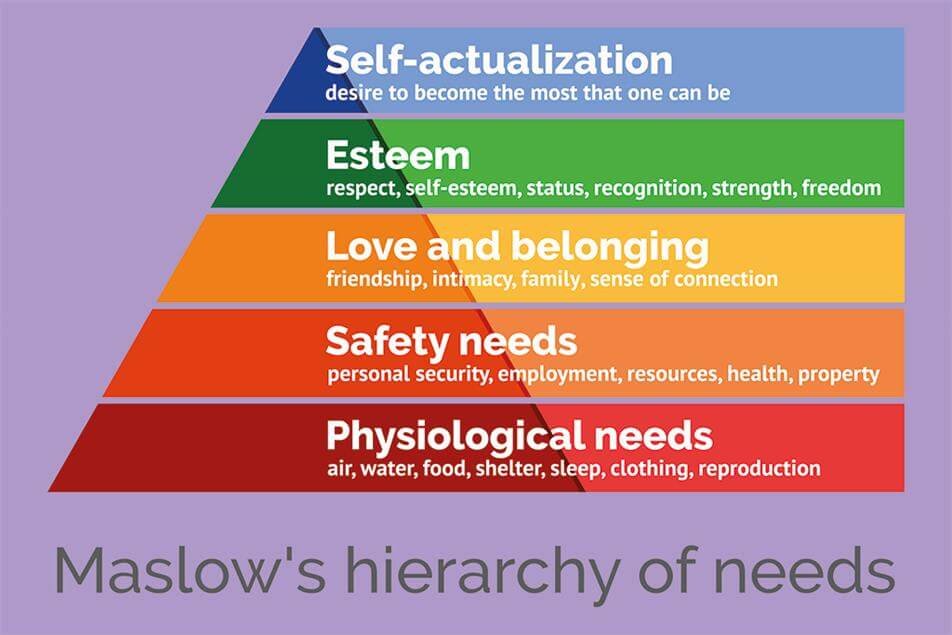Unlocking Motivation: Demystifying Maslow's Theory of Motivation

In the quest to understand human motivation, Abraham Maslow's hierarchy of needs stands as a landmark theory.
Maslow proposed a hierarchical order of individual needs, ranging from basic physiological needs to higher-level needs like self-actualization.
This theory not only provides insights into our motivations but also offers a roadmap for individuals to fulfill their needs in a balanced and purposeful manner.
Join us as we delve into the depths of Maslow's motivational hierarchy, exploring its components, verifying its hypotheses, and uncovering its applications in the field of psychology.
Get ready to unlock the secrets behind human motivation through the lens of Maslow's hierarchy.
Background of Maslow’s Motivation Theory
Abraham Maslow's motivation theory, or Maslow's hierarchy of needs, stands as a paramount concept in the field of psychology.
This influential model presents a pyramidal structure to illustrate how individuals prioritize their needs to reach self-actualization, the highest level of personal growth and fulfillment.
Unlocking the Principles of this theory is essential to gain insight into human motivations and determine how to work towards achieving objectives in a balanced and meaningful manner. Research has been conducted to validate the assumptions of this theory and study the hierarchy of needs. This ongoing research provides further comprehension of individual motivations and their complexities.
A Foundation for Understanding Maslow's motivation theory provides a basis for understanding the different layers of needs and their relation to one another. It emphasizes the importance of meeting basic physiological requirements before advancing to higher-level needs.
By unlocking the principles of this theory, individuals can gain a better grasp of their motivations and strive for self-actualization.
A Valuable FrameworkThe applications of Maslow's theory in psychology go beyond individual development to areas like organizational behavior and education.
Therefore, it is a beneficial framework for recognizing human motivations.
In conclusion, understanding the background of Maslow's motivation theory is essential for gaining insights into human motivations and how individuals can work towards fulfilling their needs in a balanced and purposeful manner.
Components of Maslow's Hierarchy of Needs
Abraham Maslow's Hierarchy of Needs outlines the various levels of needs individuals have arranged in a hierarchical order. At the base of the pyramid lies physiological needs, such as food, water, and shelter, which are essential for survival.
Moving upward, one finds safety-security needs, which involve feeling secure in one's environment and having financial stability. Belongingness needs to come next, encompassing relationships, friendships, and a feeling of being part of a community.
Esteem needs are then encountered, revolving around the desire for recognition, respect, and a positive self-image.
Lastly, at the apex of the pyramid, are self-actualization needs, focused on achieving one's full potential and living a purposeful and meaningful life.
Understanding the components of Maslow's Hierarchy of Needs can provide invaluable insight into personal motivations.
By recognizing which needs are paramount at any given time, individuals can prioritize their actions and make decisions that align with their well-being and personal growth.
It is, therefore, an invaluable tool for making choices that bring balance and purpose to daily life.
Verifying Maslow's Theory and Hypotheses
To comprehend the truthfulness and practicality of Maslow's theory of motivation, verifying his Theory and Hypotheses is essential. Numerous psychologists and researchers have labored to evaluate the hierarchical series of needs proposed by Maslow.
By gathering data and executing empirical studies, they aim to verify whether people do walk along the progressive levels of needs as Maslow suggested.
These studies involve analyzing the behaviors, motivations, and circumstances that affect an individual's decisions and actions.
The discoveries from these studies offer an invaluable understanding of human motivation and augment our knowledge of how people prioritize and satisfy their needs.
Researchers utilizing various research techniques, such as studies, experiments, and case studies, desire to affirm Maslow's theory and hypotheses.
They investigate whether people regularly prioritize certain needs over others and whether the fulfillment of one need leads to the emergence of higher-level needs.
By looking into the practices and behaviors of people across different cultures and surroundings, researchers wish to confirm the worldwide applicability and generalizability of Maslow's theory.
Moreover, they explore the elements that impact the satisfaction of needs and recognize potential exceptions or differences to the hierarchical pattern.
Ultimately, through the meticulous verification of Maslow's theory and hypotheses, researchers want to provide a more profound appreciation of human motivation and enlighten the formation of effective interventions and strategies to support people in fulfilling their needs and attaining self-actualization.
Understanding How Maslow's Theory Works
Grasping Maslow's concept is pivotal for individuals aspiring to unearth their stimulus and satisfy their requirements.
Maslow's theory puts forward a hierarchical order of needs, beginning with essential physical necessities such as food and shelter, and advancing further to higher-level needs such as connection and self-actualization.
By understanding this scale, individuals can gain an understanding of their motivations and take steps toward fulfilling their needs in a balanced and deliberate way.
This knowledge enables individuals to prioritize their needs and make prudent decisions about their ambitions and objectives.
A significant point of Maslow's concept is the idea that needs are interlinked and built upon one another. For example, before an individual can focus on higher-level needs such as self-regard and self-realization, they must first satisfy their physiological and safety needs.
This insight accentuates the importance of addressing these groundwork needs before progressing to higher-level aspirations.
By recognizing the interdependence of needs, individuals can cultivate a comprehensive approach to their private and professional development.
Also, perceiving how Maslow's theory works can help individuals activate and fulfill any gaps in the satisfaction of their needs. By inspecting the different levels of the hierarchy, individuals can contemplate which needs are currently being met and which ones are not.
This self-awareness allows individuals to detect areas for improvement and take proactive measures toward meeting their unmet needs.
Whether it's finding supportive relationships, engaging in personal growth opportunities, or forging a sense of community, individuals can now take control of their motivation and actively work towards a more rewarding life.
Maslow's theory also underscores the principle of self-actualization, which refers to the realization of one's full potential and the pursuit of personal growth and gratification. According to Maslow, self-actualization is the peak level of need in the hierarchy.
Understanding how this portion of the theory works can empower individuals to strive for personal growth, involved in meaningful activities, and pursue their passions.
By aligning their actions with their values and aspirations, individuals are now capable of living a more meaningful and fulfilling life.
Applications of Maslow's Theory in Psychology
Applying Maslow's Theory to Psychology can lead to a valuable understanding of human behavior and motivation.
In the realm of organizational psychology, utilizing the hierarchy of needs proposed by Maslow can inform the design of optimal employee motivation strategies.
By recognizing and addressing the various requirements of personnel, such as safe and supportive working conditions or opportunities for personal development and self-fulfillment, organizations can create a more devoted and efficient workforce.
Maslow's theory can also be applied in a therapeutic context, where comprehending an individual's unmet needs can inform the creation of treatment plans and interventions that can encourage psychological well-being.
Within the educational environment, this theory can guide educators in making an environment that nurtures students' feelings of acceptance and self-esteem, which can increase motivation to learn and excel academically.
Generally speaking, the uses of Maslow's Theory in Psychology are far-reaching and can give beneficial insights into human motivation and conduct in a range of contexts.
Exploiting Maslow's Theory in Psychology can also be beneficial in the realm of marketing and consumer behavior. By comprehending the various needs and motivations of consumers, marketers can develop strategies that appeal to these needs and manufacture products or services to fulfill them.
For example, advertisements often take advantage of consumers' wish for belongingness and esteem, portraying how their products can assist individuals to fit in or be esteemed by others. Furthermore, understanding the necessity for self-actualization can lead marketers to fabricate products that correspond to consumers' ambitions and personal growth.
By targeting various levels of the hierarchy of needs, marketers can craft more effective campaigns that communicate with consumers on a deeper level.
This theory is also applicable in clinical psychology, where it can aid the assessment and treatment of mental health disorders.
Through understanding an individual's unmet needs, therapists can address the underlying causes of psychological distress and create treatment plans that focus on promoting overall well-being and self-actualization.
The uses of Maslow's Theory in Psychology are multifaceted and can be seen in a variety of fields, emphasizing the significance and influence of this theory on comprehending human motivation and behavior.
Leave a Reply




Related Posts